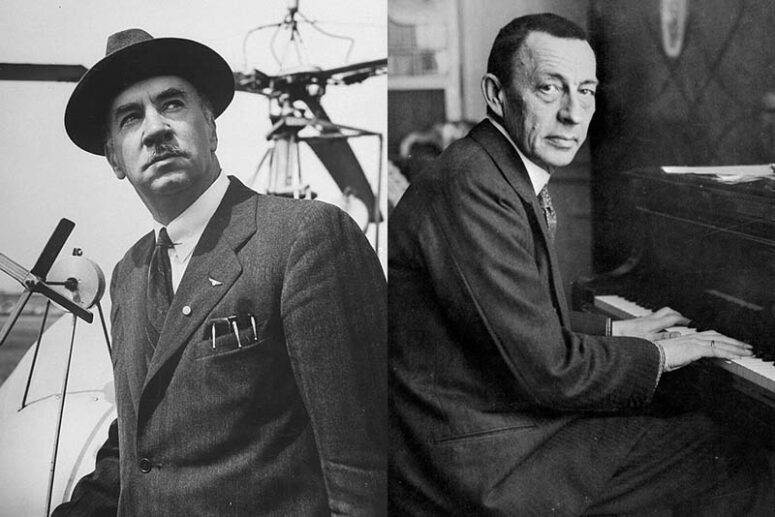
In the beginning of the twentieth century, when the Russian Empire ceased to exist, many prominent figures left their homeland. These people emigrated because deep in their hearts they could not accept the new godless regime. Besides, they could not see themselves without their work, which was useless under the new system. These people went to exile taking with them the Orthodox faith, Russian culture, love for the Church and Fatherland, and their God-given talent…
Aircraft Designer Igor Sikorsky
Igor Ivanovich Sikorsky was born on May 25, 1889 in Kiev. His grandfather was a village priest, and his father, Ivan Andreyevich Sikorsky, was an outstanding psychiatrist who, among other things, studied religious sectarianism and fanaticism. The boy was brought up in the spirit of the Orthodox faith, love for God and faithfulness to the Church. Being a very versatile person since childhood, Igor was especially attracted to aviation. The boy was interested in Leonardo da Vinci’s flying machine designs, loved reading Jules Verne’s stories about the giant airship, and dreamed of flying something like that one day.
After graduating from high school, the young man continued his studies in engineering and technology. Starting from as early as 1908, he began actively communicating with the leading aircraft designers in Russia and the West, organized an aviation workshop at the Kiev airfield and began to design his first aircraft, which took to the air in 1910.
At that time, as the scientist recalls, his activities were perceived as something supernatural, “Aeronautics was neither a science nor an industry. It was a miracle.”
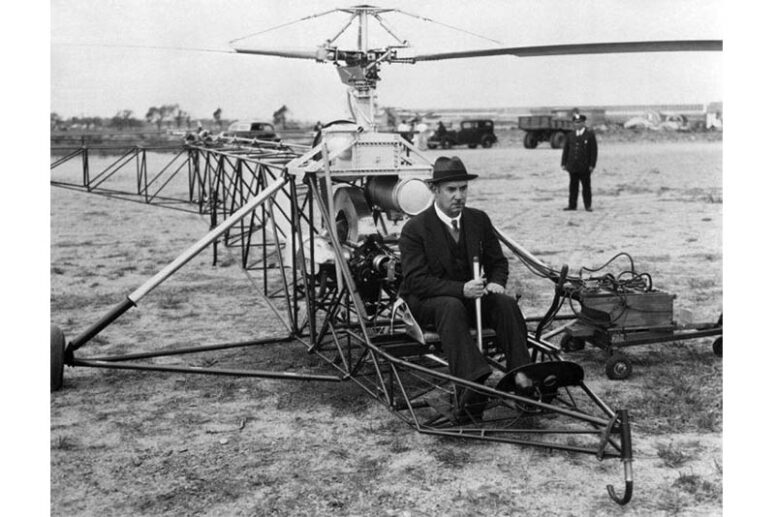
In 1912, Sikorsky was already offered a position as a leading engineer in the field of naval aviation emerging in Russia. A year later, he created his first aero-giant, a four-engine multi-pilot aircraft called “Grand”. Later it became the prototype of transport aircraft, as well as many passenger airliners and heavy bombers. Continuing to improve his technologies, in 1913 Igor Ivanovich presented his aircraft called “Russian Vityaz” to Tsar Nicholas II. The emperor was so impressed that he rewarded the aircraft designer with a gold watch.

In the same year he created “Ilya Muromets,” the largest seaplane at that time. Sikorsky was awarded the Order of St. Vladimir, 4th degree, for his great contribution during World War I by supplying first-class aircraft.
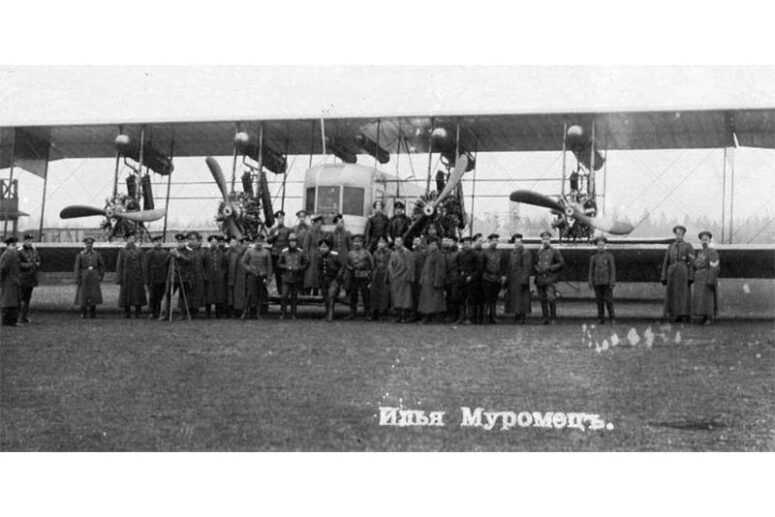

The revolution that began in 1917 interrupted the successful work of the scientist and engineer. Despite being sincerely devoted to his Fatherland, he became a victim of persecution. In a desperate situation, Sikorsky accepted a job offer from the French government. Later, unable to find a use for his skills in France, he moved to the United States after the end of the War.
The American period of Igor Sikorsky’s activity is marked by the real flowering of his talent. Dozens more aeroplane models were designed according to his drawings, as well as the first helicopters and hydroplanes. Fame and wealth did not harm his modest, generous and deeply believing soul. He donated money to build several Orthodox churches and parochial schools in the United States. He opposed the Bolshevik government, but promoted his native culture and science in America, always morally and physically supporting Russian emigrants.
Employees of Sikorsky Aircraft Company have noted that Igor Ivanovich always treated his subordinates with respect, helping many by giving them jobs or lending money. Sikorsky never avoided physical work, saying that it “saves the soul”.
A journalist once asked him, “You have ascended into the sky many times. Have you seen God there?” The scientist replied that although he had not seen God, he felt His presence everywhere.

Not many people know that the famous aircraft designer often spoke about God. In exile Igor Sikorsky became known as a religious thinker and wrote several spiritual works. Among them are In Search of Higher Realities, Evolution of the Soul, Invisible Struggle, Temptation of Our Lord Jesus Christ in the Desert and The History of Mankind, and The Message of The Lord’s Prayer. In his theological reflections based on the works of the Holy Fathers and the Holy Tradition, Sikorsky tries to explain spiritual things in terms of a man involved in science and technology.
For example, in his works on prayer, he compares Christ’s ability to convey multiple meanings and concepts in a single sentence with the simultaneous transmission of different data over a single cable. Today Sikorsky’s thoughts are perceived very vividly and do not lose relevance. “Modern humanity is massively blind to the value of Christ’s protection from the hidden spiritual dangers,” the scientist writes. “It can be compared in this respect to a child who has been bitten by a rabid dog and does not understand the seriousness of the threat and the importance of the inoculation offered to him by the wise and kind Doctor.”
In his work titled Evolution of the Soul, the author compares the process of man’s spiritual transformation into the likeness of God with the way a grain embryo, overcoming the force of gravity and breaking through the ground, reaches for the sun. Considering the evolution of the soul and its constant improvement the most important thing in human life, Sikorsky argued that without a moral core, humanity is doomed, and technological progress only contributes to its imminent death.
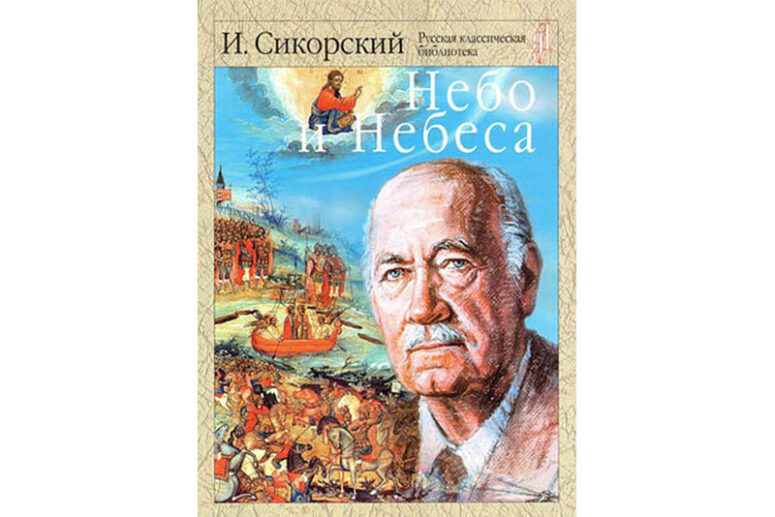
Igor Sikorsky never returned from emigration to his dear homeland. He ended his earthly journey on October 26, 1972 in his home in Easton, CT, remaining true until the last day both to his superterrestrial profession and his heavenly destination.
The scientist’s funeral was held at St. Nicholas Russian Orthodox Church in Stratford, CT, which he had earlier helped build. According to eyewitnesses, during the funeral people saw a symbolic sign in the sky. Two planes, flying on perpendicular courses, left inversion trails in the form of a large white cross. It seemed as if the visible sky was saying goodbye to the great creator of aviation.
Composer Sergei Rachmaninov
The life path of Sergei Rachmaninov began on April 1, 1873 in a family of musically gifted people. Sergei’s childhood ended early. After his two sisters died of serious illnesses, his frivolous father left the family, and his grief-stricken mother left Sergei to himself. Fortunately, Sergei’s grandmother took over the upbringing of her grandson. She was a very religious woman who had a good knowledge of church singing. It was she who instilled in the future composer such qualities as discipline, generosity and dedication. She took her grandson to church, where he took Communion and listened to the beautiful singing of the church choir. The ringing of church bells then became for Sergei a treasured childhood memory. An acolyte at the Church of St. Theodore Stratelates, not far from grandmother’s house, allowed the boy to climb the bell tower. Soon Sergei became well versed in bell ringing and learned to distinguish church bells by tones. Much later, the ringing of the Novgorod St. Sophia Cathedral sounded in one of the composer’s piano concertos.
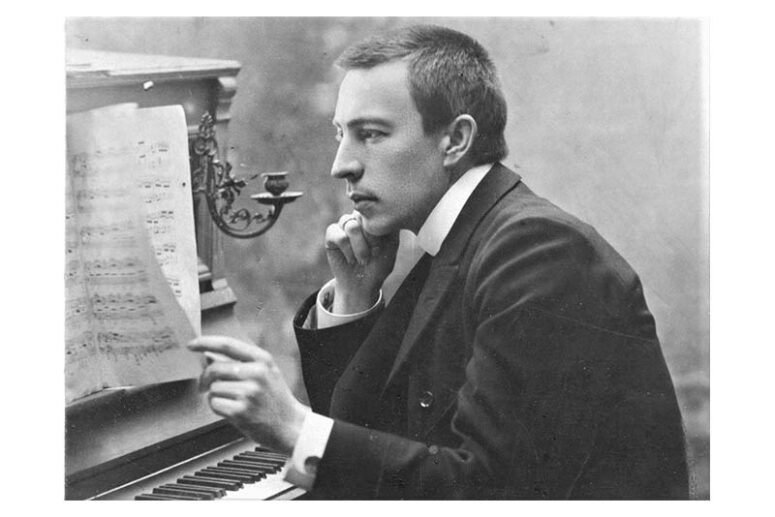
Sergei Rachmaninov achieved great fame in the musical field while still living in Russia. In the meantime, he invested all of his royalties in his family estate of Ivanovka, helping the local peasants financially and organizing a school for children there. When in 1913 the musician’s two daughters became terminally ill and then miraculously recovered, Sergei Vasilievich in gratitude to God gave the peasants of Ivanovka 209 dessiatinas (about 600 acres) of land.
“”He was very fond of church singing and would often get up at seven in the morning, rain or shine, and go to St. Andronicus Monastery, where he would stand for an entire Liturgy in the spacious half-dark church , listening to the ancient, strict hymns from the Octoechos, sung by the monks in parallel fifths. It made a strong impression on him,” composer Alexander Goedicke recalls about the life of his friend in Moscow.
The young musician seemed to have foreseen the terrible catastrophe looming in Russia and wanted to warn the people of it with his First Symphony (1894). Its basic idea was the biblical theme of punishment for unrighteousness and lack of faith. Rachmaninov chose these words from Scripture as an epigraph: “Vengeance is mine, I will repay…” (Rom 12:19).
The composer considered his most worthwhile works to be the Liturgy of John Chrysostom (1910) and the All-Night Vigil (1915), written for choral performance. “The Liturgy” was met by the public, critics, and clergy rather sceptically. The symphonic style of the music was not very consistent with the established principles of church singing, and according to contemporaries, it was impossible to pray to it.
Sergei Rachmaninov – Liturgy of St. John Chrysostom
The All-Night Vigil with its references to the ancient hymns of Znamenny chant made an entirely different impression on the listeners. Rachmaninov used all the means of musical expression in the All-Night Vigil to deepen the prayerful meaning of the divine service. This cycle of works was a resounding success and also Rachmaninov’s last creation in Russia.
Sergei Rachmaninov – All-Night Vigil
With the outbreak of the revolution in 1917, the composer decided to leave his beloved homeland, which, in his opinion, was heading toward disaster. As it turned out, he was leaving forever. In exile, Sergei Vladimirovich wrote little music. “Having lost my homeland, I lost myself. An exile, deprived of his musical roots, traditions and native soil, has no desire to create, and no solace other than an unbroken silence and memories,” he wrote. His main activities abroad were his numerous concerts in Europe and the USA. There was not a day when Rachmaninov did not think longingly about his homeland. In the early 1920s, when the population of the USSR experienced a terrible famine and devastation, every month Rachmaninov sent money and 20-30 heavy food parcels to support musicians, artists, writers and poets. Besides, during all the years in exile, the composer tried to surround himself with fellow countrymen, to whom he regularly helped with significant sums of money.
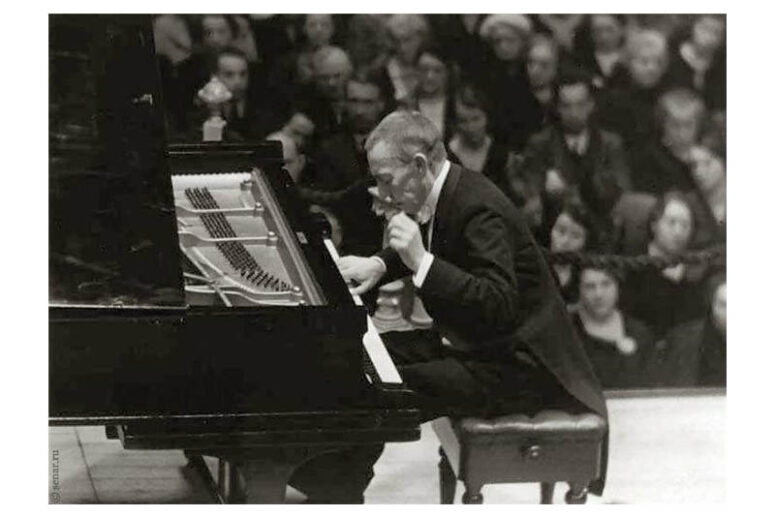
The composer was a great friend of Igor Sikorsky. According to a well-known story, the aircraft designer owed his success in America to Rachmaninov. They met backstage after one of the composer’s concerts. Learning about Sikorsky’s difficult situation, Sergei Vladimirovich handed him a generous sum of $5,000 to help the aircraft engineer rise to his feet and continue his work.

Despite his great fame, Rachmaninov remained a simple and modest person all his life. Soon after the composer had moved to the USA, one music critic asked him why he was performing in such modest clothes. Sergei Rachmaninov then replied, “No one here knows me anyway…” Years later, when the composer became very famous in America, earning extremely high pay, the same critic again asked him why he was still dressed as modestly as before. “Well, everyone knows me anyway…” the maestro answered.
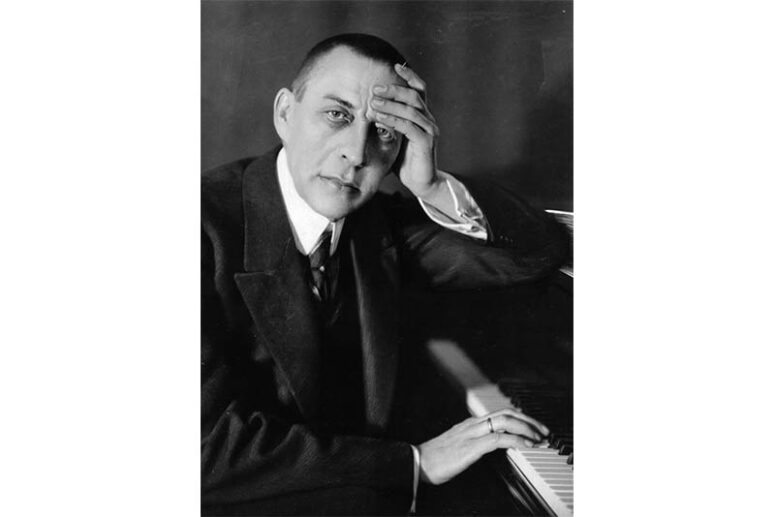
In 1940 Sergei Rachmaninov completed his last major work. It was the second edition of the Fourth Concerto and the Symphonic Dances. The composer considered this work one of the best and at the end of the score he signed: “October 29, 1940. Thank You, Lord!”
With the outbreak of World War II, Sergei Vasilievich sent his every third fee to support the Soviet Union and urged all Russian emigrants to do the same. Although he did not like the new government, he deeply empathised with his people. The Soviet authorities appreciated the help of the loyal son of Russia during the difficult time of war, and the composer even had the hope of giving a concert in Leningrad. It was not destined to happen, however: in 1943, he was diagnosed with cancer. Until his last day, occasionally regaining consciousness, the ailing composer asked about the latest reports from the Russian battlefront, and he lived to see the victory at Stalingrad. “Thank God!” he whispered upon hearing the news. On March 27, 1943, after confessing and taking Communion, Sergei Rachmaninov gave up his soul to God.
Leaving his homeland in body, he never left it in spirit. Through his music, his personal example and works of mercy, he glorified the spirit and beauty of the Orthodox faith that he had embraced since his youth. In the words of his contemporary, the Japanese pianist Sadakatsu Tsuchida, who has become Orthodox, “Rachmaninov is a great treasure. In his work there is the spirit of Orthodoxy, the power of the Resurrection, Russia, kindness, a merciful view of the world, and the memory of eternity.”
* * *
Undoubtedly, these two shining examples are only a small part of the Russian people who have preserved and strengthened the Orthodox faith in exile. Other notable examples include the ballerina Anna Pavlova, who served in orphanages in France and inspired people with the divine beauty of her dance, the writer Ivan Bunin and his faith-inspired poetry, and the composer Igor Stravinsky with his Lamentations of the Prophet Jeremiah. Unfortunately, not much is said about the spiritual side of celebrities’ lives. One way or another the Russian emigrants of the twentieth century were followed in the West by the Russian Orthodox Church Abroad. Its main beauty has always consisted in sincere believers, devoted to Orthodoxy and striving to preserve its spirit in every part of the world.


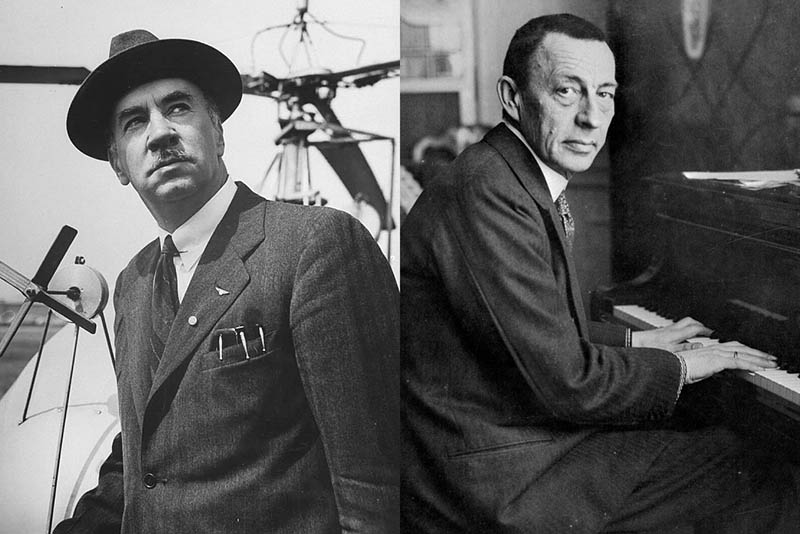

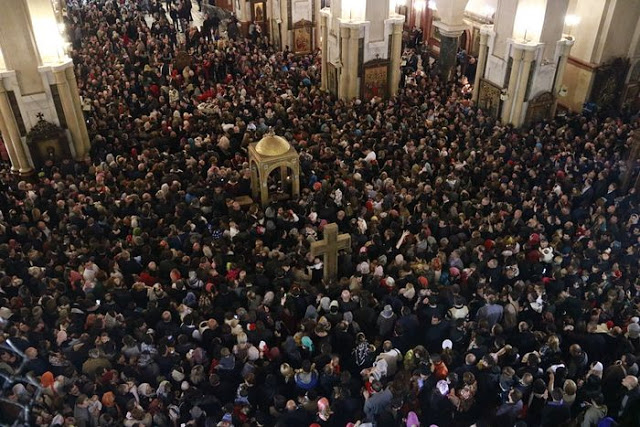

Thank you for this wonderful article! I was familiar with the name, Igor Sikorsky, from school. I knew the name Sergei Rachmaninov from the record albums my mother played when I was a child. But I knew nothing about the personal lives of either man. Reading this was truly a delight!
I am not Russian but the stories of the lives of these famous men and others including Anna Pavlova, are deeply moving, the way they remained faithful to the Russian Orthodox church and helped other refugees and loved their country and countrymen. They are examples of goodnes and honour in these days where such things, so important, are no longer valued. Thank you for this article.
Thank you for this…